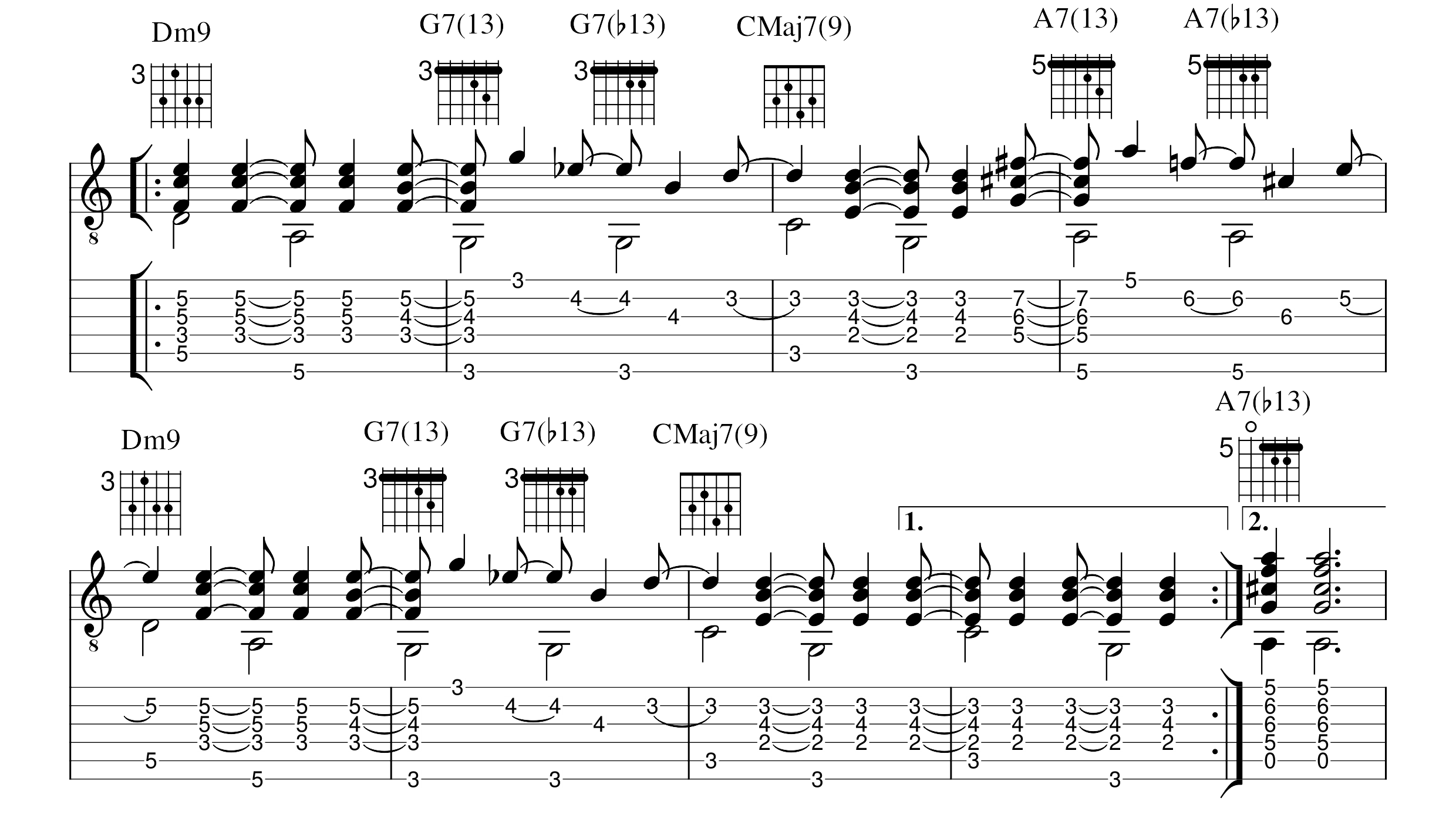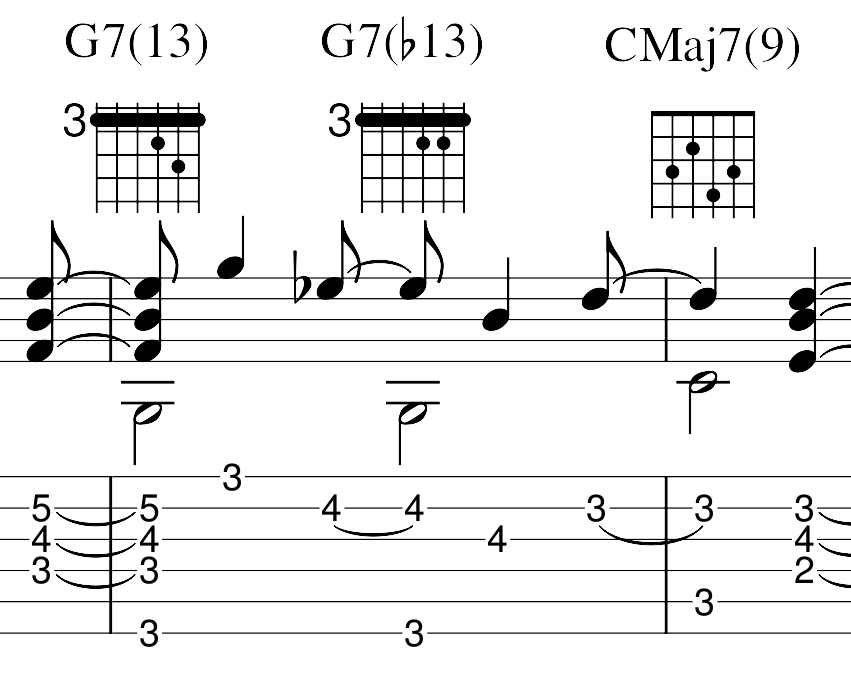In this series I will introduce various Bossa Nova chord progressions. Some are taken directly from famous recordings, others are suitable as exercises for important chord types or often used harmonic cliches.
Chord Progression #2 consists of three very famous chord types that can also be found in the TOP10 Bossa Nova chords. The chords are: Dm7, G7 and CMaj7. They are each extended with an additional note that gives the chord sound more color.
The basic chord types are four-note chords (recognizable by the extension 7) which are extended with a note from the series 9, 11 or 13. In Dm7 and CMaj7 the ninth (9) is added, the G7 chord is extended by the thirteenth (13). In the following fingering diagrams this is the top note (5th or 3rd fret on the B string).
If these chords follow one another and are resolved to the basic chord of the key (CMaj7), this is called a II-V-I cadence. This chord connection is the basic building block of many jazz and bossa nova songs.



Bossa Nova Guitar CHords
A II-V-I cadence usually consists of four bars. The basic chord CMaj7 takes up the last two bars, as can be seen in the example in line 2. The first line shows a variation of the cadence. Here, a so-called intermediate dominant is inserted in the last bar, in this case A7(13). This chord has a natural voice leading to the following Dm7(9) chord and is often played at this point.

A special feature of this chord sequence is the melody which can be heard in bars 2, 4 and 6. Here, the extended note of the G7(13) chord is lowered by a semitone. This results in a G7(b13) chord. This chord with the extended note b13 (Eb, B-string 4th fret) in turn resolves perfectly to the following CMaj7(9).
The reason for this is the voice leading E (=13 of G7) to Eb (= b13 of G7) to D (= 9 of CMaj7). I also applied this voice leading to the A7 chord in bar 4 of the chord progression. This creates a pleasant symmetry in the entire chord progression. Combining this melodic concept with the typical off-beat rhythms of Latin American music results in a beautiful II-VI cadence that can be used in many Bossa Nova and Jazz songs. Below you will find a list of useful songs to practice this chord progression.

Detail: Voice leading from G7 to CMaj7
Suggested Songs:
- Once I loved
- Manha de Carnaval
- I wish you love
- Blue Bossa
- Girl from Ipanema
- Dindi
- Desafinado
- Georgia on my mind